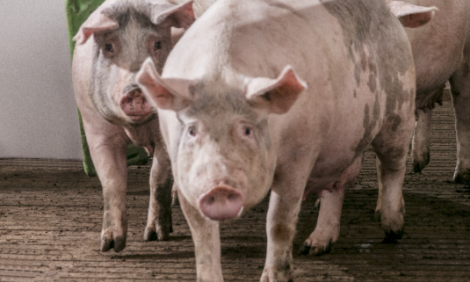



CME: Slower Growth for Canadian Livestock Expansion
CANADA - Different from the US, where we have seen robust growth in terms of both cattle and hog supplies, Canadian livestock expansion has been notably slower. Statistics Canada released yesterday the results of its semi‐annual surveys for cattle and hogs and below are some of the highlights and implications for North American beef and pork production, write Steve Meyer and Len Steiner.Interestingly, the Canadian semi‐annual cattle survey comes even as USDA decided, for budgetary reasons, to discontinue the US survey. As a result, we cannot provide a July 1 North American inventory and will have to wait until January to review the overall supply status.
Beef/Cattle: The total cattle inventory in Canada as of July 1 was estimated at 13.205 million head, 170k head (+1.3 per cent) higher than the previous year. Despite this year’s increase, Canadian cattle inventories are still about 3.7 million head smaller than in 2005. The outbreak of BSE in Canada in 2002, the shiŌ in exchange rates and the spike in feed costs all contributed to chop off about a fiŌh of the Canadian cattle industry in the past decade. And while the latest numbers show some modest growth, we do not see the kind of expansion trajectory as in the US. Last year Canadian cattle inventories actually declined in July as extremely strong demand for feeders in the US pushed more calves into the US herd and US feedlots. This year US calf prices have cooled off and this has supported Canadian herd expansion. Canadian producers held back about 642,000 heifers for beef cow replacement, 28,000 (+4.5 per cent) more than a year ago and the largest beef cow replacement number since 2008. Normally the increase in heifer retention translates into a larger beef cow herd but feed supplies over the summer and fall remain a critical factor.
The total beef cow herd in Canada as of July 1 was 3.811 million head, just 11,000 head (+0.3 per cent) larger than the previous year and now some 30 per cent smaller than it was back in 2005. This number particularly highlights the difficulties that Canadian producers have in outlining a robust growth strategy going forward. About 1.7 million beef cows have disappeared in the past decade, a number that cannot be recovered by retaining a few thousand heifers every spring. The calf crop for the first six months of this year was estimated at 3.435 million head, 115k head (+3.5 per cent) larger than the previous year. For all of 2016 we estimate the Canadian calf crop at 4.423 million head, 125k head (+2.9 per cent) larger than a year ago.
Pork/Hogs: Hog supplies in Canada are slowly expanding as well but current industry size is dramatically smaller than it was a decade ago. The breeding herd as of July 1 was estimated at 1.244 million head, this is about 2.5 per cent higher than it was in 2013 but still quite a ways from recovering the 26 per cent drop from the 2005 inventory peak. The combined US and Canada summer breeding stock is now estimated at 7.222 million head, 62k head (+0.9 per cent) larger than the previous year. The increase in the size of the breeding stock and continued improvements in productivity (more pigs per litter) set the stage for further expansion in North American hog supplies this fall and winter. The inventory of all hogs and pigs in Canada as of July 1 was 13.450 million head,1.6 per cent larger than the previous quarter and 1.9 per cent larger than the previous year. The pig crop in Canada for the Jan—Jun 2016 period was 14.399 million pigs, 2.2 per cent larger than a year ago. Farrowings for this period were 1.272 million which implies a pig per litter level of 11.31, notably higher than the US average. The pigs per litter declined only modestly in late 2013 and 2014 as the PEDv impact was much smaller than in the US. Bottom line: The expansion in the Canadian hog industry follows similar trends in the US and thus will continue to bolster the supply of feeder pigs that enter the US market in the next 12 months.






